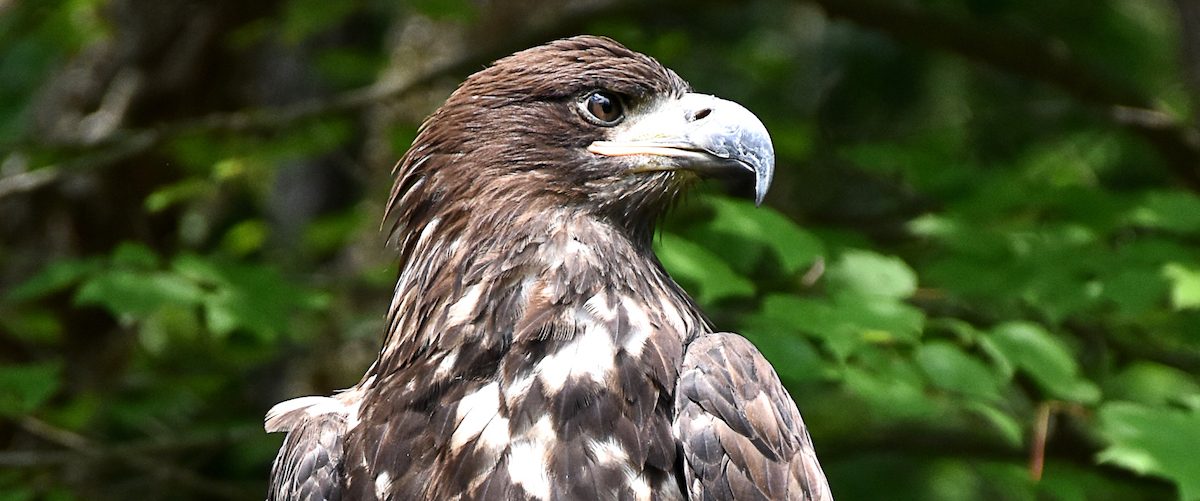Where to spot 9 rare and regal birds in the wild
West Virginia is a hotbed for unique and rare bird sightings.
In addition to its own resident raptors and songbirds, the Mountain State is along key routes for neotropical migration. That makes it a top bucket-list birding destination.
Here are some of the best places to spot some unique or rare birds in West Virginia:
1. Northern Saw Whet Owls
Valley Falls State Park, Fairmont
The itty bitty Northern Saw-whet Owl is so small, it can fit right into your palm. Help catch these cute, big-eyed critters as they swoop through Valley Falls during banding workshops in the fall.

2. Birds of prey
Hanging Rock Raptor Observatory, Jefferson National Forest
Get eye-level with the eagles and owls at the East Coast’s premiere observatory. Through the fall migration season, hike out to join expert birders atop this mountaintop tower and help count the birds of prey. It’s so high, the birds are usually not soaring above, but right by you, and the 360-degree view of the mountains seems to roll on forever into the distance.
3. Songbirds
Allegheny Front Migratory Observatory, Dolly Sods
Tucked into the scenic wilderness of Dolly Sods, this observatory has been netting and banding passing birds for more than 40 years. Get up close to more than 100 species, including some of the state’s most colorful and unique birds.
The most common are migrating neotropical warblers, but you never know what will pass through.
In 2014, observatory banders unexpectedly came across the state’s first confirmed Kirtland’s Warbler— a cute, stout bird that happens to be one of the rarest and most sought-after wood warblers in the world (the #1 “bucket list” bird, according to The Nature Conservatory).

4. Eagles
Pipestem Eagle Survey, Pipestem Resort State Park
Eagles are soaring over the Southern skies once again! Help keep track of their triumphant return during the spring and winter Pipestem Eagle Surveys.
Pair up with local experts from the parks to watch for bald and golden eagles in Pipestem Resort State Park and surrounding area. You may even be lucky enough to keep watch over a nest and hatchlings!
5. Cerulean Warbler
Eidolon Nature Preserve, Great Cacapon
West Virginia has the biggest population of breeding pairs of the beautiful pale-blue Cerulean Warbler. You can usually spot couples in late spring and early summer along the trail from the main cabin at the Eidolon Nature Preserve.

6. Swainson’s Warbler
Babcock State Park, Clifftop
This shy songbird is famous for being exceptionally good at hiding. You may hear their beautifully fluid voices ringing through the forests, but spotting them is a much more taxing task.
But you may snag a glimpse of this sleek songbird in springtime, if you know where to look. (Hint: it’s often in thickets of our state flower, the rhododendron.) A stroll through Babcock State Park’s dense patches may just reward you with a quick peek.
7. Henslow’s sparrow
Hillcrest Wildlife Management Area, New Cumberland
The shy grassland-dwelling Henslow’s sparrow is not the easiest to spot. But you may be lucky enough to catch the streaky little bird roaming the Hillcrest Wildlife Management Area— just don’t be surprised if it bounds away! It’s skittish, and tends to hide in the brush instead of exposing itself in the open skies.
Hillcrest is also a great place to spot other field birds like the ring-necked pheasant.
8. Golden-winged warblers
Fernow Experimental Forest, Monongahela National Forest
The brightly-marked and extra-selective golden-winged warbler only mates in a few scattered, specific patches of land. If you’re hoping to spot one, start east of Elkins in the Monongahela National Forest, and look for high-elevations with dense shrubbery along forest borders.
9. Osprey
Ohio River Islands National Wildlife Refuge, Parkersburg
The 22 islands of the Ohio River Islands National Wildlife Refuge is a great place to spot a number of birds, but the osprey didn’t used to be one of them. At one point, there were only 6 known osprey nests in the state, and it stayed that way for decades.
A plant along the Ohio River partnered with the West Virginia Division of Natural Resources to rear osprey chicks, hoping they would return to mate. Since that reintroduction, ospreys have made a remarkable comeback.
Which of those magnificent Mountain State (or migratory) birds have you seen?
This post was last updated on December 26, 2024








